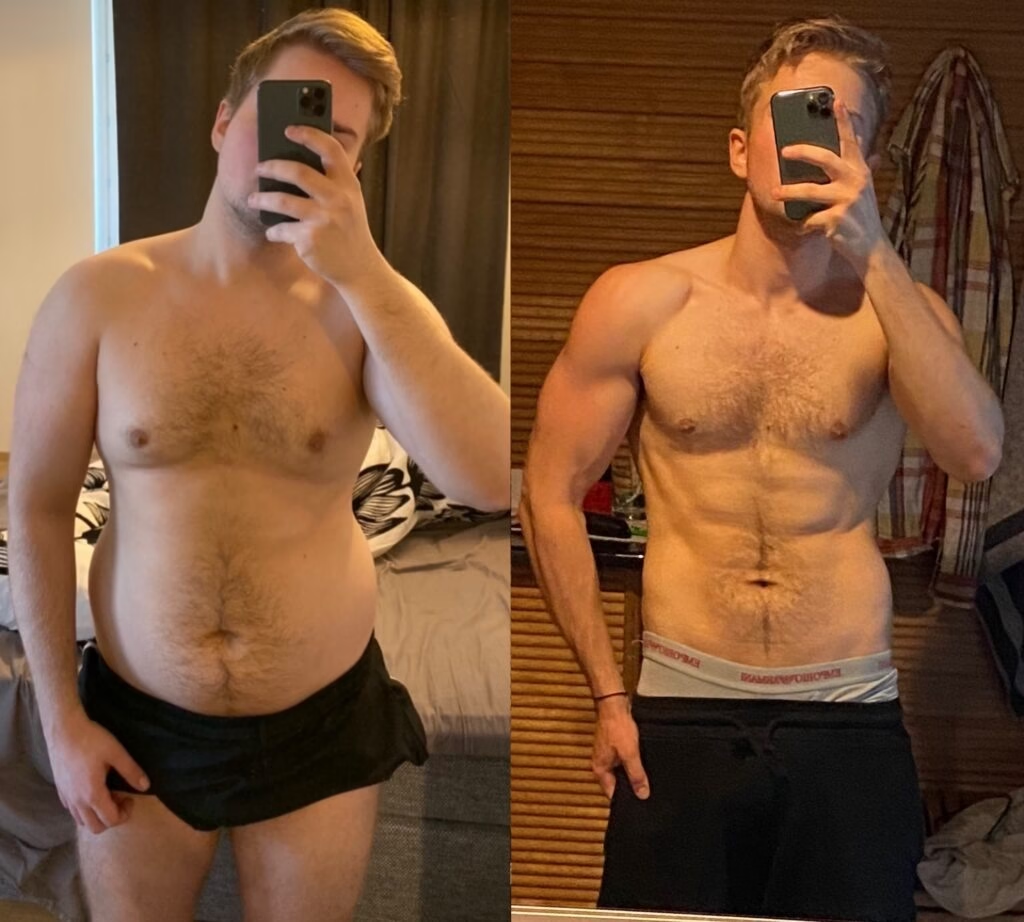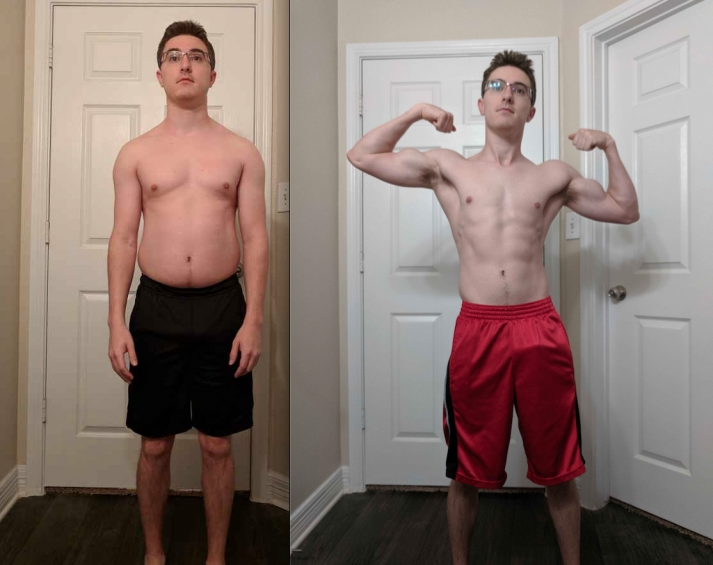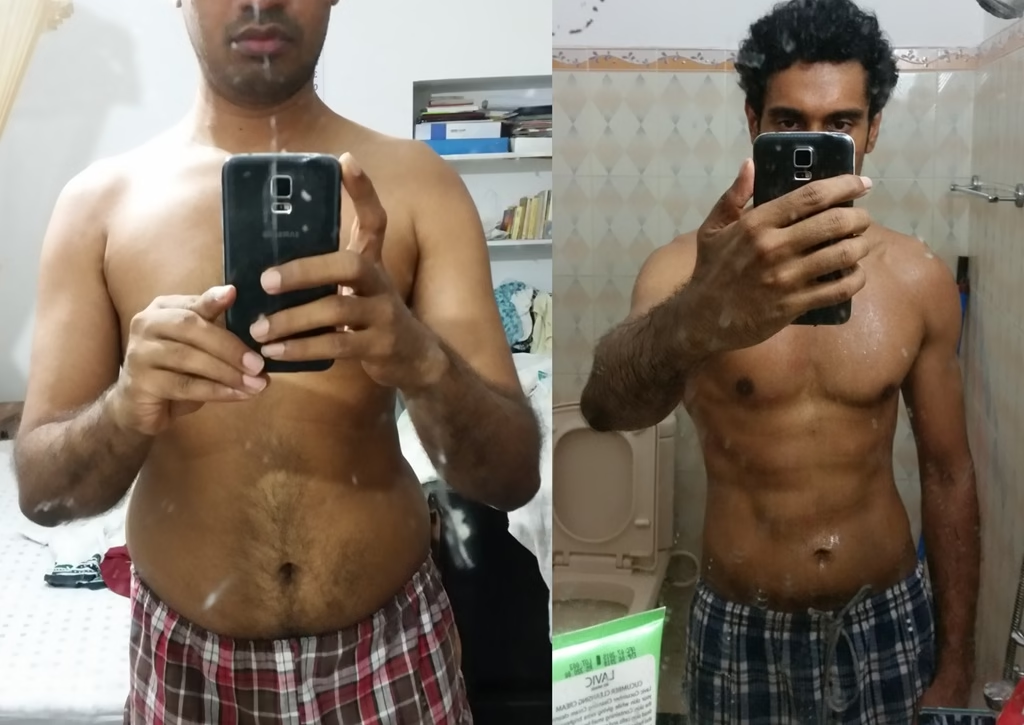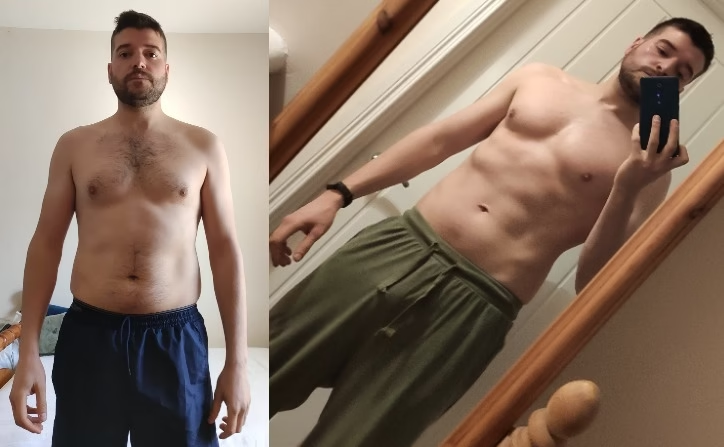Skinny fat describes someone at a normal weight who looks soft, with low muscle and stubborn belly fat. The scale might look fine, yet clothes feel tight around the waist. The fix is not more sweat sessions or crash diets. It is a simple plan with steady effort.
Real changes tend to show up in 12 to 24 weeks. Strong, lasting results often come in 6 to 12 months. The patterns behind skinny fat success stories are consistent: basic strength training, protein-centred meals, daily steps with light cardio, enough sleep, and stress in check. This works for men and women, and for busy schedules.
If quick fixes have not stuck, this guide lays out what actually worked long term. It pulls lessons from repeat winners, not just 30-day experiments. For more real-world context, see the client results on Skinny-Fat Transformation Success Stories and compare timelines with posts like this 12-week case from Ultimate Performance.
What skinny fat success stories have in common
Most before-and-after stories share the same playbook. Simple metrics. Simple workouts. Protein first. Steps every day. Enough sleep to recover. The rest is noise.
Clear starting point and simple targets
Winners start with a baseline. They take front, side, and back photos in the same light. They record waist and hip in centimetres, and body weight. They estimate maintenance calories with a basic calculator or by tracking current intake for two weeks.
Targets are simple and trackable:
- Protein at 0.7 to 1 gram per pound of body weight per day.
- Daily steps are around 7,000 to 10,000.
- At least 7 hours of sleep, aiming for 8 when life allows.
Simple targets beat long lists of rules. People keep them, so they work.
Train for muscle, not just sweat.
Two to three strength sessions per week, full body, win most often. Think squat, hinge, push, pull, carry. The goal is to get stronger over time, not to leave the gym wiped out.
Progressive overload in plain terms: add a small amount of weight, or one rep, or one set, slowly. Stop 1 to 2 reps before failure to keep form clean. Take proper rest days so muscles grow. Endless cardio did not work as well as smart lifting plus steps.
Protein first, and a small calorie change
Most successful plans use a mild calorie deficit, or maintenance calories with better protein and training. The big changes are simple swaps: fewer sugary drinks, more lean protein, more fibre, and more water.
Easy meals help:
- Greek yogurt with berries and a handful of almonds
- Eggs and toast with spinach
- Rice with beans and chicken, salsa on top
- Tofu stir-fry with mixed vegetables and noodles
Crash diets that cut calories too hard backfire. Energy drops, training stalls, and the cycle repeats.
Track a few things, adjust slowly
Track body weight three times per week and use the average. Measure re waist once per week. Log training numbers every session. Take monthly photos.
Make small changes only after 2 to 3 weeks with no progress. For timelines from real people, the discussion on expected time frames in this Reddit thread is a useful reference. Simple, slow tweaks beat constant overhauls.
The long-term workout and nutrition plan that actually worked
The goal is not a perfect plan. It is a plan most people can keep for months. Here is a friendly, sustainable starting point.
Beginner strength plan that fits a busy week
Run a 3-day full-body A/B split on non-consecutive days. Keep it focused.
- Day A: squat, bench or push-up, row, plank or farmer carry
- Day B: hinge or deadlift variation, overhead press, lat pulldown or pull-up work, split squat
Do 2 to 4 sets of 6 to 12 reps. Rest 60 to 120 seconds between sets. Each week, add a small amount of weight or one rep to a few sets. If joints feel tired, take a deload week every 8 to 12 weeks. Cut the volume in half and come back fresh.
Strength grows when the basics are repeated. Keep the same main lifts for a while. Swap only if a joint nags or the setup is not safe.
Cardio that burns fat without hurting gains
Use walking as the base, since it does not get in the way of lifting.
- Aim for 8,000 to 12,000 steps per day.
- Add one short HIIT session per week, 10 to 15 minutes. Bike sprints work well.
- Place cardio after lifting, or on rest days.
- Keep it short and controlled so legs recover.
More is not better. Consistent steps and a short weekly hit are enough for most.
Protein-centred meals and smart calories.
Set protein at 0.7 to 1 gram per pound per day. Start with a small calorie deficit if fat loss is the goal. If energy or mood drops, shift to maintenance for a month, then continue.
A simple sample day:
| Meal | Example | Protein Focus |
|---|---|---|
| Breakfast | 2 eggs, whole-grain toast, Greek yogurt, blueberries | Eggs, yogurt |
| Lunch | Chicken, rice, black beans, bell peppers, salsa | Chicken, beans |
| Snack | Protein smoothie or soy yogurt with banana | Whey or soy |
| Dinner | Tofu stir-fry with mixed veg and rice, or tempeh noodle bowl | Tofu or tempeh |
Plant-based options like tofu, tempeh, beans, lentils, and soy yogurt make it easy to hit targets without meat. Drink water throughout the day and limit sugary drinks. Meal prep a few basics on weekends to save money and time during the week.
Recovery, supplements, and stress basics
Sleep is the quiet driver of results. Aim for 7 to 9 hours. Set a regular bedtime and a wind-down routine. Short daily walks or five minutes of mobility calm the mind and help recovery.
Supplements can be simple and proven:
- Creatine monohydrate, 3 to 5 grams per day
- Vitamin D, if a blood test shows low levels
- Caffeine for training focus, kept away from late night
Skip fat burners. They add stress, not results. A long-term approach to skinny fat has more to do with routine than pills. Articles like this Quora discussion, Who has gone from skinny fat to a good physique, echo that long view.
Real-world skinny fat success stories with timelines and takeaways
These stories lean on the same basics. The details change, but the habits stay.
Office worker, 29, Toronto: lost 10 kg, first pull-up, better posture
Start: 78 kg, soft midsection, no pull-up.
Plan: three full-body lifts per week, steps at 9,000 per day, protein at 150 grams per day, mild calorie deficit.
Timeline:
- Weeks 1 to 12: better form and steady strength jumps
- Months 4 to 6: waist down 6 cm, shirts fit better
- Months 7 to 12: body weight at 68 kg, first pull-up, deadlift up 50 kg from the start
Takeaways: a clear protein target and consistent progressive overload beat random workouts. For those curious about structured coaching timelines, compare with the 12-week case at Ultimate Performance.
New mom, 35: rebuilt core, lost 12 cm off waist, steady energy
Start: cleared by her doctor after birth.
Plan: two lifts per week for 12 weeks, then three; daily walks with stroller; core and pelvic floor work; protein at 120 grams per day; mostly plant-forward meals.
Timeline:
- Months 1 to 3: better core control and posture
- Months 4 to 6: waist down 7 cm, energy steadier
- Months 7 to 12: waist down 12 cm, can goblet squat with her child’s weight
Takeaways: a slower pace and a sleep-first mindset work. Consistent steps and gradual training beat crash efforts.
Student, 21: budget-friendly recomposition and dorm-gym wins
Start: 64 kg, thin arms, belly fat, limited funds.
Plan: 3-day A/B full body with dumbbells; 8,000 steps; one short HIIT bike session per week; protein at 120 grams using eggs, milk, beans, and tofu; meal prep rice and lentil bowls.
Timeline:
- Months 1 to 3: steadier lifts, better form
- Months 4 to 9: shoulders and back fill out, waist down 5 cm
- Month 12: visible abs in good light, steady study and sleep routine
Takeaways: Cheap protein and simple plans can work very well. For more examples of busy people making it work, see the RNT client story, Dr. Shaan Patel, from skinny-fat to muscled.
Mindset, habits, and tools that kept results for years
The common thread is consistency, not perfection. People who keep results make the process feel light and repeatable.
Pick a pace you can keep
Set minimums:
- Two to three lifts per week
- Steps most days
- Protein at each meal
Work toward an 80 or 90 percent rule. That allows social meals without guilt. Maintenance phases are normal and healthy. They keep the training progress moving even when fat loss pauses.
Simple tech that helps without stress
Wearables help track steps and sleep. A notes app or lifting log makes sets and reps visible. Monthly photos in the same light show changes the scale.
Avoid obsessing over daily weight swings. Trends over weeks matter. Chasing every new trend wastes time that could go to training and sleep. Real success stories, like those listed on Skinny-Fat Transformation Success Stories, echo the same habits rather than new tricks.
Plateau fixes that protect the muscle
Use gentle changes first:
- Add 1,000 to 2,000 steps per day
- Add one set to big lifts
- Adjust calories by 150 to 200 per day
Short tools can help. A 4 to 6 week mini-cut trims fat without losing strength. A 1 to 2 week diet break at maintenance can reset hunger and training drive.
Red flags and myths to avoid
Watch for traps that stall progress:
- Daily HIIT that crushes recovery
- Crash diets that kill training
- Program hopping every two weeks
- Fear of carbs that lowers training performance
Judge progress by waist, photos, clothes fit, and strength, not just the scale. Timelines vary with the starting point and life stress. Community posts, such as the expectations discussed in this Reddit thread on how long it takes, can help set a realistic view.
Conclusion
Skinny fat success looks simple on paper, and it works when kept simple in practice. Lift 2 to 3 times a week, walk daily, eat enough protein, sleep well, and make small changes only when needed. Pick one action today, like setting a protein target or taking a 20-minute walk. Commit to the next 6 to 12 months, not 6 to 12 days. The result is a lean, strong look that lasts because the habits behind it are sustainable.


















